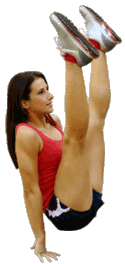At WiseGEEK, we're committed to delivering accurate, trustworthy information. Our expert-authored content is rigorously fact-checked and sourced from credible authorities. Discover how we uphold the highest standards in providing you with reliable knowledge.
How Do I Choose the Best Running Arm Warmers?
To choose the best running arm warmers, individuals should select the fabric type that is best for their climate, and decide whether they require moisture wicking technology. Nylon and cotton blends are best for those living in cool climates that may be able to reach a suitable internal body temperature during their workout without the aid of extra clothing for insulation. Athletes exercising outdoors in very cold climates with high winds may benefit from selecting a warmer that is made from wool or fleece. This product is available in both light and heavy weight materials with added moisture wicking technology that keeps the athlete's body comfortable and moves sweat away from their skin.
Running arm warmers are long sleeves that are designed to slide into place over the arms without attaching to any additional clothing. They are often worn with tank tops to create the effect of a long sleeved shirt with arm pit vents. They provide warmth and protection for athletes that may begin exercising in cold or cool outdoor climates. They can be easily removed during a work out to allow the athlete's body temperature to maintain itself without overheating or becoming uncomfortable.

This product varies greatly in price, often based on the properties of the fabrics used during construction. More expensive running arm warmers tend to incorporate moisture wicking capabilities into the materials used in the fabric. This allows the product to move moisture away from the body as the athlete perspires, so that the individual does not overheat or become clammy while exercising. This technology also can discourage the growth of mildew and bacteria in the lining of the clothing.
Less expensive arm warmers do not provide this added feature, and may become damp with perspiration as the workout progresses. Depending on the intensity of the workout and the body chemistry of the wearer, this type of arm warmer may be more prone to slide down off the arms while exercising than its more costly counterpart. Runners who do not perspire a great deal, or who exercise during cooler times of the day to counteract this effect, may find that the arm warmers without moisture wicking fabric work as well for them, however, and can enjoy the financial savings.
Athletes who live only in slightly cool climates may prefer to purchase running arm warmers that are made from lighter weight fabrics. Some arm warmers are sewn from heavy weight wool to provide maximum protection and heat insulation in very cold temperatures with high wind chill factors. These products are not suitable for those who can achieve a comfortable body temperature during the course of their workout without adding additional insulation. Light weight arm warmers are typically made from a blend of cotton, rayon, and nylon so that the product stays in place on the arm despite friction, and provides low level warmth. Wool and fleece blends are similarly available for individuals living in colder regions where maximum insulation may be needed.
AS FEATURED ON:
AS FEATURED ON:










Discuss this Article
Post your comments